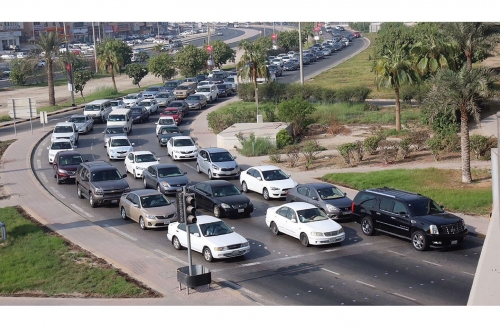The total number of vehicles in the Kingdom of Bahrain has been on a steady rise over the years, with data showing a slight increase in the number of vehicles from the previous year. As of the end of last year, there were approximately 747,350 vehicles on the streets and roads of Bahrain. This includes a variety of vehicles such as private cars, cranes, motorcycles, cargo vehicles, pickups, taxis, public transportation, and others. Comparing this to the number of vehicles at the end of the year before last, which was around 746,256, there was only a marginal increase of 1,094 vehicles.
Private cars make up the majority of vehicles in Bahrain, accounting for 77% of the total number of vehicles on the road. In 2023, the number of private cars stood at around 575,294, showing a slight decrease from the previous year when there were approximately 575,386 private cars. This small decline of 92 cars indicates that the number of private cars did not witness an increase but remained relatively stable.
When it comes to private transportation vehicles, such as pickups, regular trucks, and lorries, the numbers were also significant. The total number of private transportation vehicles reached 44,151, with pickups making up a substantial portion at 32,900. Private passenger transportation, including buses, stood at 12,547. Additionally, there were 22,423 registered rental cars, 65 public passenger transportation vehicles (private buses), and 2,962 contractor vehicles like cranes and forklifts.
Other categories of vehicles in Bahrain included taxis, cargo vehicles, shared public transportation vehicles, diplomatic entity vehicles, ride-hailing vehicles, racing vehicles, semi-trailers, tourist transport vehicles, and heritage vehicles. There were 1,325 taxis, 3,306 cargo vehicles, 535 shared public transportation vehicles, 723 diplomatic entity vehicles, 57 ride-hailing vehicles, 186 racing vehicles, and 7,459 semi-trailers. In addition, there were 274 tourist transport vehicles and 255 heritage vehicles registered in the Kingdom.
The increase in the number of vehicles on the roads of Bahrain can be attributed to various factors such as population growth, urbanization, and economic development. With more people owning private cars and businesses requiring transportation services, it is no surprise that the total number of vehicles continues to climb. This trend also highlights the importance of infrastructure development and transportation planning to ensure the efficient and safe movement of vehicles on Bahrain’s roads. Additionally, with the rise of ride-hailing services and other shared transportation options, the landscape of transportation in Bahrain is evolving to meet the growing demands of its residents and visitors.


























